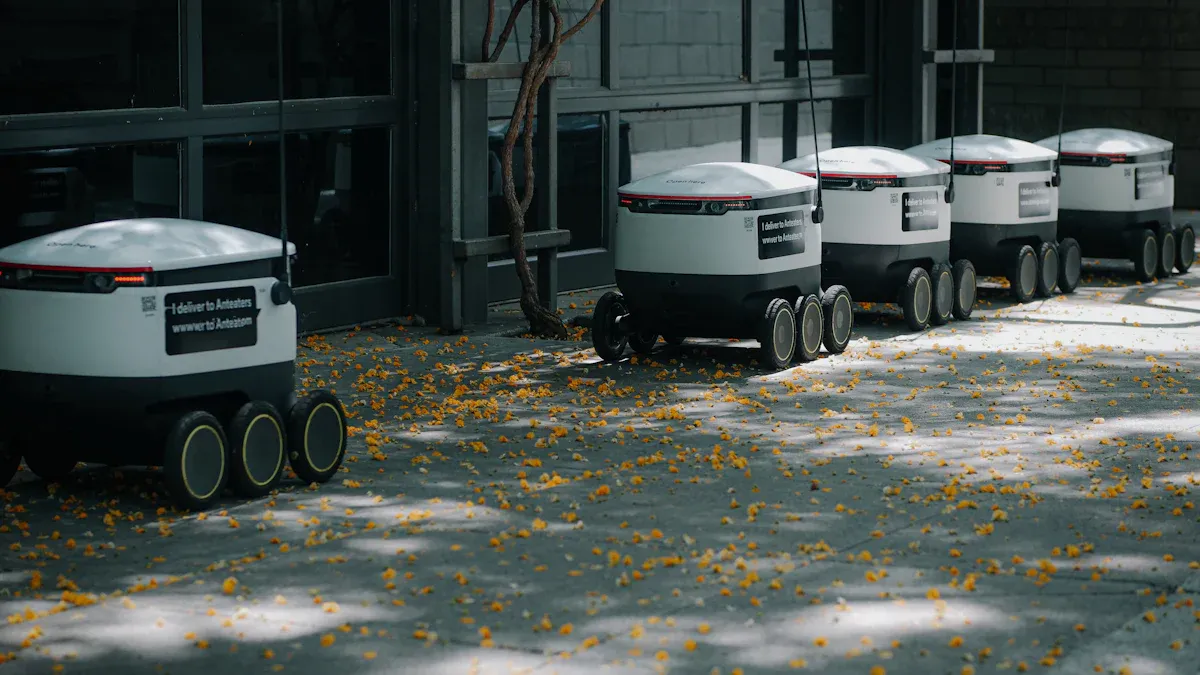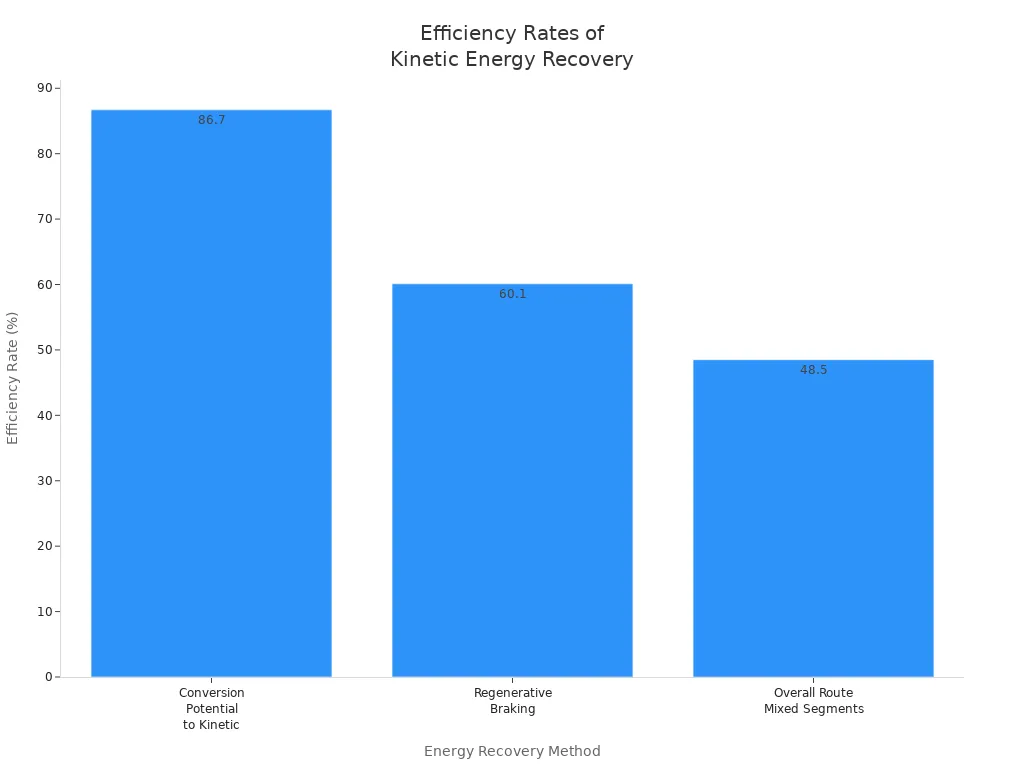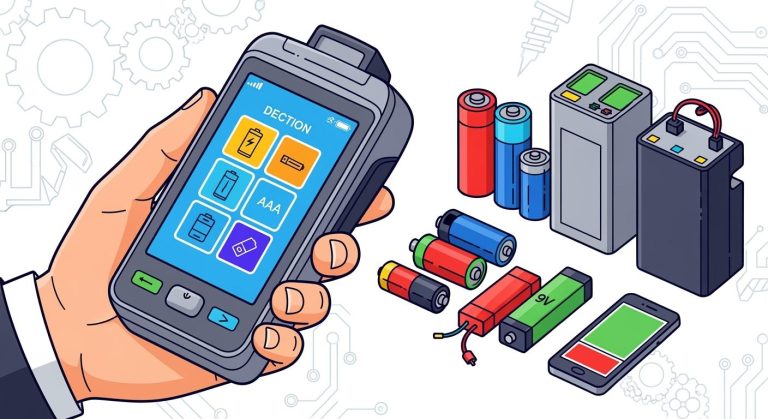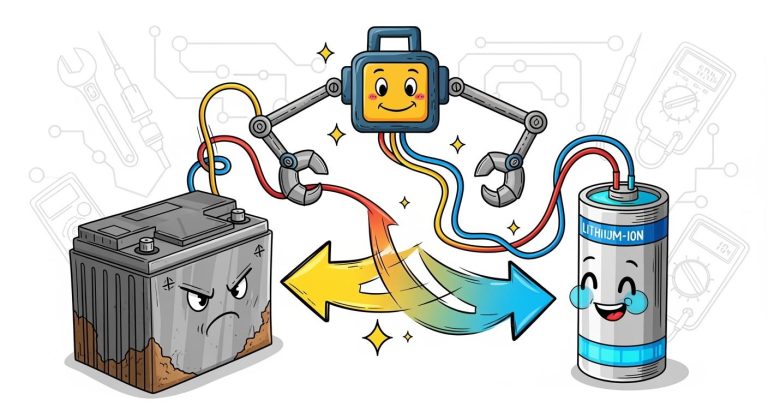
If you want your patrol robots to work longer and smarter, you need long-lasting batteries with advanced battery chemistry. LiFePO4 stands out, giving you reliable cycle life and strong safety features for autonomous grid operations. You care about energy density and weight, so check out these key battery performance metrics:
Metric | Description |
|---|---|
Energy Density | The amount of energy stored per unit weight, crucial for mobile robotics to minimize weight. |
Weight | Heavier batteries limit the robot’s mobility and efficiency, especially for walking robots. |
Improved Technologies | Ongoing advancements are necessary to meet the energy demands of various robotic functions. |
Modern battery chemistry, like solid-state and LiFePO4, plus intelligent thermal management, help you extend working hours and reduce downtime for your grid team.
Key Takeaways
LiFePO4 batteries provide over 10 years of cycle life, significantly reducing downtime and maintenance costs for grid patrol robots.
Lightweight batteries enhance robot mobility, allowing for longer patrol times and more efficient energy use.
Integrating kinetic energy recovery systems can extend battery life by capturing energy during movement, improving overall efficiency.
Optimizing patrol routes with advanced algorithms can save energy and increase the operational range of robots.
Regularly monitor battery health with management systems to catch wear early and ensure peak performance.
Part1: Long-Lasting Batteries and Autonomy

1.1 LiFePO4 Cycle Life
When you choose LiFePO4 batteries for your grid patrol robots, you unlock a new level of autonomy. These batteries deliver thousands of cycles, which means your robots can keep working long after traditional lithium-ion batteries have reached their end of life. You want your robots to patrol for years, not just months. Take a look at this comparison:
Battery Type | Cycle Life (Approx.) | Lifespan (Years) |
|---|---|---|
LiFePO4 | Thousands of cycles | 10+ |
Traditional Li-ion | ~500 cycles | 2-3 |
LiFePO4 batteries typically last over 10 years, while lithium-ion batteries average around 2-3 years. You get a cycle life over five times longer with LiFePO4. This extended cycle life means less downtime and fewer replacements, which boosts your operation’s efficiency and reduces maintenance costs.
You might wonder how these numbers play out in real-world operation. In patrol mode with a pre-programmed route, robots like the Go2 Pro can operate for up to 3 hours and 45 minutes before needing a recharge. If you add extra sensors or tackle rough terrain, runtime drops, but you still get reliable performance. In standby mode, with partial sensor usage, the battery can last up to 5 hours. That’s the kind of continuous operation you need for demanding grid environments.
1.2 Safety and Reliability
Safety matters when you deploy robots in critical infrastructure. LiFePO4 batteries offer strong safety features compared to other lithium-ion batteries. You get stable chemistry, lower risk of thermal runaway, and robust performance even in harsh conditions. This reliability is essential for grid patrol robots that operate in remote or hazardous areas.
Tip: Always pair your high-performance battery with a smart battery management system (BMS). A BMS monitors battery capacity, temperature, and charge cycles, helping you avoid unexpected failures. For more on BMS technology, see our battery management systems guide.
LiFePO4 batteries also perform well in extreme temperatures. Cold weather can reduce battery efficiency, but LiFePO4 maintains stable operation. You can trust your robots to keep working, whether it’s freezing or scorching outside. This reliability extends to other sectors, too—medical devices, security systems, and industrial robots all benefit from LiFePO4’s safety profile.
1.3 Lightweight Power Sources
You want your robots to move efficiently, so battery weight becomes a key factor. The weight of the battery affects the overall mass of the robot, which influences resistance to motion. Increased resistance leads to higher energy consumption during operation. If you choose lightweight, high-performance battery packs, you maximize your robot’s operational range and autonomy.
Lighter batteries mean less energy wasted on moving extra mass.
You get longer patrol times and more coverage per charge.
Optimized energy density lets you pack more power into a smaller, lighter package.
Energy density is crucial for mobile robots. LiFePO4 batteries offer high energy density, which means you get more power without adding unnecessary weight. This advantage supports continuous operation and helps your robots handle tough terrain and heavy sensor loads. You see similar benefits in consumer electronics, medical equipment, and industrial automation, where lightweight power sources drive efficiency.
If you want to push autonomy even further, consider integrating kinetic energy recovery systems and optimizing your robots’ movement paths. These strategies help you squeeze every bit of battery capacity out of your high-performance battery packs.
Part2: Extended Autonomy in Field Operations

2.1 High-Performance Battery Impact
You want your grid patrol robots to stay out in the field longer, covering more ground with fewer interruptions. High-performance lithium battery packs, especially those using LiFePO4 chemistry, make this possible. These batteries deliver consistent power and support quick swaps, so your robots spend less time charging and more time working.
The Go2 Pro robot can patrol for up to 3 hours and 45 minutes before a low battery alert.
If your robot faces inclined terrain or carries extra weight, runtime drops to about 2 hours and 15 minutes.
In standby mode, with minimal activity, the battery lasts up to 5 hours.
Real-time battery monitoring and fast swapping systems boost operational efficiency.
You see these benefits in industries like energy, utilities, and security, where extended autonomy is critical for continuous monitoring and rapid response. When you deploy autonomous robots with high-performance batteries, you reduce downtime and maximize coverage. For more on advanced battery technologies, check out IEEE Spectrum’s battery research.
Tip: Choose battery packs with smart management systems. These systems track charge cycles and health, helping you plan maintenance and avoid unexpected failures.
2.2 Kinetic Energy Recovery
You can stretch your robots’ working hours even further by using kinetic energy recovery systems. These systems capture energy during movement, such as when your robot slows down or descends a slope, and convert it back into usable power. This process improves overall energy efficiency and supports sustainable operations.
Method of Energy Recovery | Average Efficiency Rate |
|---|---|
Conversion of Potential Energy to Kinetic Energy | 86.7% |
Regenerative Braking System | 60.1% |
Overall Route with Mixed Segments | 48.5% |

You see similar energy recovery strategies in electric vehicles and industrial automation. These systems help you lower energy costs and reduce your carbon footprint. If you want to learn more about sustainable practices in robotics, visit our sustainability page.
Note: Kinetic energy recovery not only extends battery life but also supports your company’s sustainability goals.
2.3 Path Optimization
You can get even more out of your battery packs by optimizing your robots’ patrol routes. Advanced algorithms, like the improved A* algorithm, help your robots find the shortest and most energy-efficient paths through the grid. These algorithms use models to estimate both distance and energy consumption, so your robots avoid unnecessary detours and save power.
Aspect | Description |
|---|---|
Algorithm Name | Improved A* Algorithm for Path Planning of Spherical Robot |
Focus | Minimizing energy consumption while navigating through a grid |
Key Components | Energy Consumption Estimation Model (ECEM) and Distance Estimation Model (DEM) |
Optimization Objective | Minimize both energy consumption and path length |
Comparison | Takes into account both distance and energy consumption unlike traditional A* algorithm |
When you implement path optimization, you see measurable improvements:
Path length drops by 21% in similar settings and 42% in long-range optimized settings.
Revisit time falls by 33% for similar settings and 57% for long-range optimized settings.
These gains mean your autonomous robots spend less energy on travel and more time on actual patrol tasks. You see similar optimization strategies in warehouse logistics and smart agriculture, where robots must cover large areas efficiently.
Block Quote: Smart path planning lets you maximize extended autonomy and get the most out of every battery charge.
Part3: Maintenance and Upgrades
3.1 Battery Wear Signs
You want your grid patrol robots to run at peak performance, so spotting battery wear early is key. Over time, you may notice shorter patrol times, slower charging, or unexpected shutdowns. These are classic signs of battery degradation. To stay ahead, use diagnostic tools that give you real-time data on battery health. Here’s a quick look at some top options:
Tool Name | Description |
|---|---|
Battery Health Analyzer | Measures internal resistance and voltage, helping you compare multiple batteries. |
CELLGUARD™ Wired BMS | Provides continuous monitoring of battery performance indicators for proactive maintenance. |
CELLGUARD™ Wireless BMS | Offers accurate monitoring of battery state-of-health through voltage, temperature, and conductance. |
A battery management system helps you track these metrics and alerts you before small issues become big problems. You can schedule maintenance or replacements before your robots lose valuable uptime.
3.2 Upgrade Decisions
When your robots start showing signs of battery wear, it’s time to consider an upgrade. High-performance lithium battery packs, especially LiFePO4, offer longer cycle life and better durability. But how do you know when to make the switch? Use these criteria to guide your decision:
Feature | Description |
|---|---|
Hot-Swappable Batteries | Replace batteries without shutting down, keeping your robots in the field longer. |
Multi-Battery Parallel Capability | Connect multiple batteries for more energy and longer runtime. |
IP67 Rating | Protects against dust and water, perfect for harsh environments. |
Smart Monitoring and Communication | Get real-time data on battery status for proactive management. |
Customizable Options | Tailor battery solutions to your specific grid patrol needs. |
You should also think about ethical sourcing when upgrading. For more on responsible materials, see our conflict minerals statement.
3.3 Cost-Benefit Analysis
Upgrading to high-performance battery packs can save you money over time. Let’s break down the numbers:
Factor | Impact on Total Cost of Ownership |
|---|---|
Price per kilowatt-hour | $151 per kWh, lower than previous years |
Expected Battery Lifespan | 1,000–3,000 cycles, reduces replacements |
Maintenance and Warranty | 5–10 years, lowers ongoing expenses |
You get more value from batteries with a longer lifespan and fewer replacements. Lower maintenance costs and strong warranties help you control your budget.
Tip: To maximize battery life, unplug your robot when fully charged, avoid deep discharges, and store batteries at 50% charge during long breaks. Always let batteries warm up to at least 10°C before charging.
If you follow these best practices, your lithium battery packs will deliver reliable power for years.
Long-lasting batteries like LiFePO4 give your grid patrol robots the endurance they need for longer shifts and fewer interruptions. You see real benefits when you switch to advanced battery technology:
Improved grid stability
Flexibility in energy management
Enhanced safety features
Cost savings
You can boost your team’s efficiency and lower maintenance costs. Now is a great time to review your current battery solutions and think about upgrading to LiFePO4 or other advanced lithium battery packs for better performance.
FAQ
What makes LiFePO4 batteries ideal for grid patrol robots?
LiFePO4 batteries offer long cycle life, high energy density, and stable platform voltage. You get reliable power for your robots, which means fewer replacements and less downtime for your grid operations.
How does battery cycle life affect robot technology in the field?
Long cycle life lets you deploy robot technology for extended periods. You spend less time on maintenance and more time on actual grid patrol tasks. This boosts productivity and lowers operational costs.
Can you use kinetic energy recovery with lithium battery packs?
Yes, you can integrate kinetic energy recovery systems with lithium battery packs. These systems capture energy during movement, which helps your robots stay in patrol mode longer and improves overall efficiency.
How do you know when to upgrade your battery packs?
Watch for shorter patrol times, slow charging, or unexpected shutdowns. Use battery management systems to track health. When performance drops, consider upgrading to advanced lithium battery packs like LiFePO4.
What is the difference between LiFePO4 and NMC batteries?
Chemistry | Cycle Life (cycles) | Energy Density (Wh/kg) | Platform Voltage (V) |
|---|---|---|---|
LiFePO4 | 2,000–10,000 | 90–160 | 3.2 |
NMC | 1,000–2,000 | 150–220 | 3.7 |
LiFePO4 offers longer cycle life and better safety. NMC provides higher energy density.






